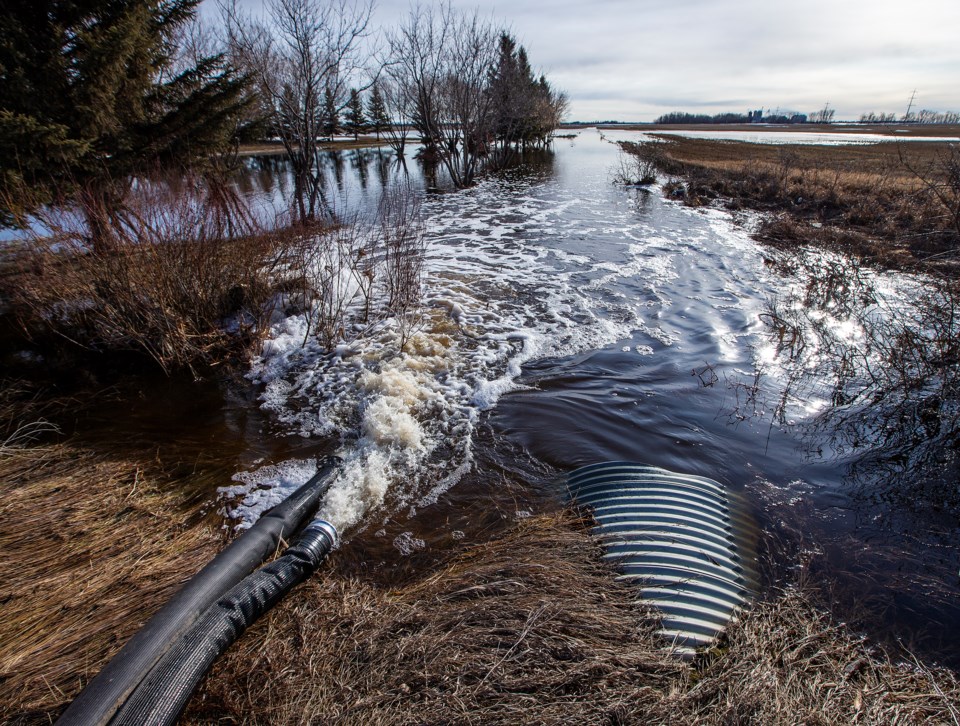A new county drainage bylaw means county residents can now be fined if they plug up a culvert and flood someone else’s land.
Sturgeon County council approved the county’s first-ever surface drainage bylaw Aug. 24.
Council heard that this bylaw was meant to address land changes (e.g. filling a culvert or a lake) that caused floods and harmed public or public land.
County crews currently address such changes through education and referrals to Alberta Environment, the latter of which tends to drag its feet on these often-minor flooding issues, transportation and engineering services manager Gary Mayhew told council. This bylaw would let the county compel landowners to fix drainage problems should they refuse to do so willingly.
The law states that anyone who owns land that features a drainage facility (such as a culvert) must ensure it is kept clear of snow and other debris, and that nothing is built on or over it. Owners must preserve any natural water bodies on their land and ensure the land is sloped so it directs water into drainage facilities.
The law states that landowners are not to alter any natural surface drainage features, water bodies, or watercourses without county, provincial, and federal approval, and are not to shunt stormwater into a county drainage facility without the county’s permission. They are also not allowed to direct water onto an adjacent lot (e.g. through a downspout or sump-pump) or install sprinkler systems within 0.15 m of a property line.
Bylaw officers can levy fines of $250 for violations of this bylaw ($750 on subsequent offences), and order owners to fix drainage problems.
Mayhew emphasized that this bylaw would be used as a last resort, and that owners agreed to fix drainage issues after a chat with county officials nine times out of ten.
Coun. Dan Derouin said this bylaw was long overdue, as the county was some 30 years behind when it came to addressing drainage problems.
“If we want good roads in the county, we have to get rid of the water in the ditches.”




